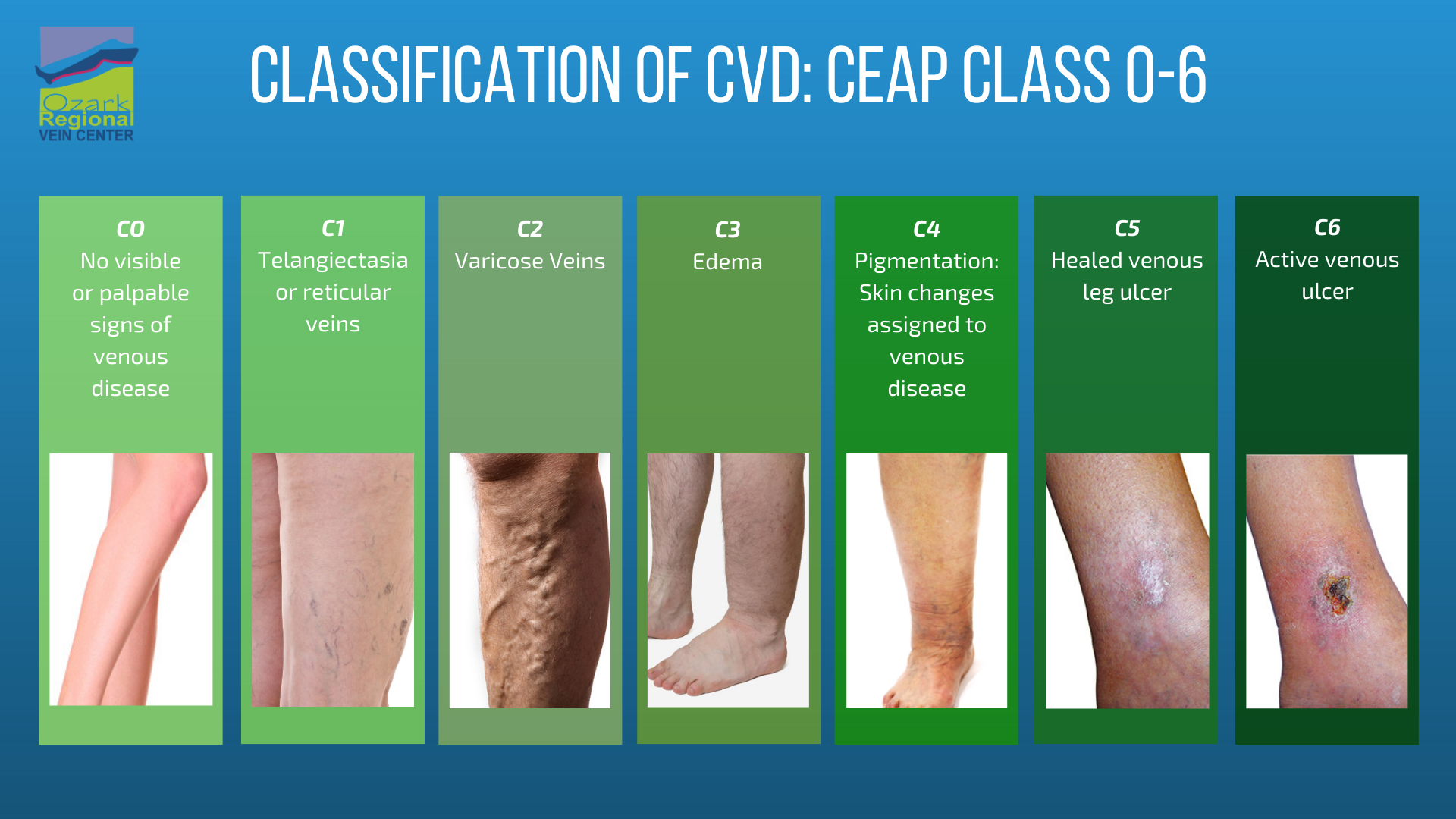One of our areas of pride at Ozark Regional Vein & Artery Center is our ability to educate patients. Besides treating peoples’ vein issues, we want them to gain a better understanding of what’s happening to their bodies. We believe that gaining a better grasp on the “why” leads to more awareness and, therefore, better long-term care.
As the top vein specialists in Northwest Arkansas, we’re adept at helping patients regain their lives. Our combination of knowledgeable experts and advanced technology gives us a unique ability to provide sustainable solutions for your vein issues. Read on to learn more about CEAP classifications and how they relate to your treatment!
CEAP Classifications
In terms of the severity of your vein issues, there’s actually an official standard of classification used by vein experts across the country. We know this as the CEAP (Classification, Etiology, Anatomy, and Pathophysiology), and it measures classification on a scale of 0-6. The higher the classification, the more severe your venous disease is.
Essentially, C0 and C1 classifications don’t warrant much of a concern. The extent of a C1 classification is usually cosmetic spider veins, which can be hereditary and aren’t covered under insurance. C2 classification is where we get into varicose veins, which is one of the more common treatments we offer at our clinic in Rogers.
In the more advanced level of venous reflux and deep vein issues, you’ll notice severe and even life-threatening symptoms. The C4 classification is when you start seeing skin damage, and C5 and C6 indicate either an active or healed ulcer.
C4 classification is characterized by brown, hard skin. An active ulcer will have those same characteristics, but with a hole in the skin that’s both excruciatingly painful and potentially life-threatening.
The good news is that we can treat these issues, but it’s far more effective if we catch them early. We can still treat the later stages of venous disease, but permanent damage will be prevalent. For instance, if you allow your severity to get up to a C6 level, the best it can ever be again is a C5 classification. If you get to a C4 classification, it’s always going to be C4 and so forth.
Learn More About Vein Anatomy, Physiology, & Pathology
Ozark Regional Vein & Artery Center is the only practice in Northwest Arkansas that provides all the highest quality vein treatments available. Dr. Haney and our expert staff have over 75 years of combined experience in the industry, ensuring you get the best leg vein procedures available in Rogers.
We make it our mission to help people overcome their vein issues and live a healthy life. If you have additional questions about the anatomy, physiology, and pathology of your veins, please reach out to us at any time.
Regardless of your issue, we’re capable of providing the guidance you need to look and feel better. Get started today by using our Instant Vein & Artery Screening Quiz or scheduling a consultation.

